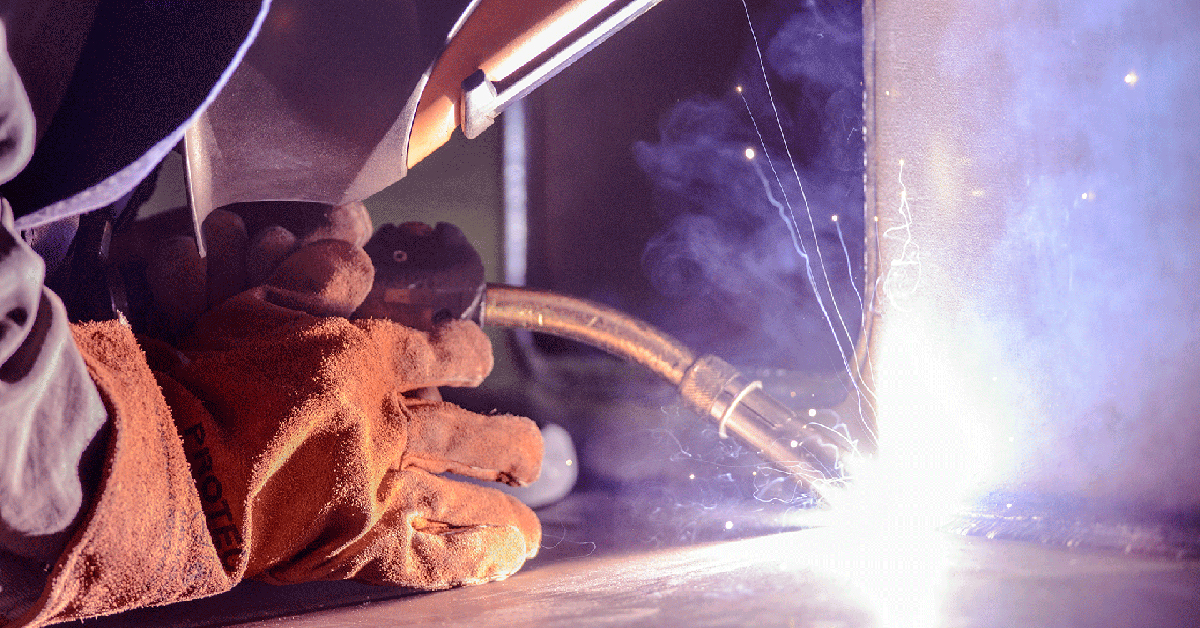Best Overview to Preventing Weld Undercut: Tips and Techniques
Best Overview to Preventing Weld Undercut: Tips and Techniques
Blog Article
Comprehending the Causes and Solutions for Undercut Welding in Metal Manufacture Processes
In the world of steel construction procedures, the incident of undercut welding postures a significant challenge that demands a comprehensive understanding of its causes and viable solutions. The intricate interplay of numerous variables throughout welding operations can lead to this unwanted sensation, affecting the structural integrity and total top quality of the bonded joints - Preventing weld undercut. By exploring the root causes of undercut welding and discovering effective remedial actions, makers can raise the standard of their handiwork and make certain the manufacturing of flawless steel parts
Usual Reasons For Undercut Welding
Frequently neglected in metal construction, undercut welding happens due to various factors that require thorough focus and competence to be effectively alleviated. Furthermore, improper welding strategies, such as utilizing the incorrect welding angle or take a trip rate, can also add to damage formation. The selection of welding specifications, such as voltage, present, and wire feed speed, plays a considerable duty in the occurrence of undercut welding.
Impact of Incorrect Welding Parameters
Incorrect welding parameters can substantially compromise the integrity and quality of bonded joints in metal fabrication processes. The impact of incorrect welding specifications materializes in numerous means, resulting in structural weaknesses and issues in the welded parts. One crucial element affected by incorrect welding parameters is the infiltration deepness of the weld. Inadequate heat input because of reduced welding currents or exceedingly high traveling speeds can cause insufficient blend between the base metals, bring about insufficient joint penetration and damaged bonds. Conversely, extreme warm input created by high welding currents or sluggish traveling rates can bring about too much and burn-through support, developing a breakable and unsteady weld framework. Furthermore, incorrect specifications such as inappropriate voltage settings or wrong electrode angles can contribute to unpredictable weld bead accounts, lack of combination, and increased chances of issues like undercutting. Meticulous interest to welding parameters is critical to ensure the manufacturing of top quality welds with the desired mechanical homes and structural stability.
Impact of Improper Torch Angle
Improper lantern angle in welding procedures can substantially affect the quality and integrity of the last weld joints in steel construction procedures. Undercutting is a common welding defect where a groove creates along the weld toe, weakening the joint and compromising its architectural stability.
A lantern angle that is as well high can bring about insufficient infiltration, insufficient blend, and boosted spatter. On the various other hand, a torch angle that is also shallow can cause too much penetration, burn-through, and distortion of the base material. Preventing weld undercut. Appropriate lantern angle is important for making sure regular weld top quality, strength, and appearance
To avoid damaging and other defects created by incorrect lantern angles, welders must be educated to keep the appropriate lantern angle throughout the welding process. Regular tracking and modification of lantern angles during welding can aid achieve audio welds with minimal defects.
Role of Inadequate Welding Methods

Another facet of inadequate welding methods is improper weld preparation. Poor cleansing of the base steels, wrong joint layout, or not enough edge preparation can all add to undercut welding. Furthermore, insufficient shielding gas protection or utilizing the wrong kind of gas can cause incomplete combination and the formation of undercut defects.
To address the role of poor welding strategies in metal construction processes, it is vital to give thorough training for welders. Proper education and learning on welding parameters, joint preparation, and securing gas choice can help protect against undercut welding and make certain high-quality welds in metal fabrication projects.
Efficient Solutions for Undercut Welding
Attending to undercut welding in steel manufacture requires applying effective options to enhance weld quality and architectural honesty. Among the key services to deal with undercut is to change welding parameters such as voltage, present, and travel rate to make sure appropriate heat input and fusion. By fine-tuning these settings, welders can avoid too much melting of the base metal and filler material, reducing the chance of undercut formation.
Furthermore, correct joint prep work is vital in preventing undercut. Making sure tidy base metal surfaces cost-free of contaminants and utilizing the ideal bevel angle can help promote much better weld infiltration and reduce the threat of undercut - Preventing weld undercut. Employing suitable welding methods, such as weaving or oscillating the lantern, can also help in dispersing warmth equally and filling the weld joint appropriately, minimizing the possibility of undercut problems
In addition, selecting the appropriate welding consumables, including electrodes and filler metals, is necessary in minimizing undercut. Making use of materials with appropriate chemical compositions and mechanical buildings can add to achieving audio welds with minimal undercut. Regular evaluation and quality assurance actions need to additionally be applied to identify and address undercut issues promptly, ensuring the total honesty of made steel elements.

Verdict
Finally, recognizing the reasons and services for undercut welding in metal fabrication procedures is critical for attaining index high-grade welds. By attending to typical causes such as incorrect welding parameters, improper lantern angle, and my response insufficient welding methods, welders can avoid damaging and make sure strong, durable welds. It is vital to pay focus to these aspects and execute effective options to improve the overall welding process and end product top quality.

Report this page